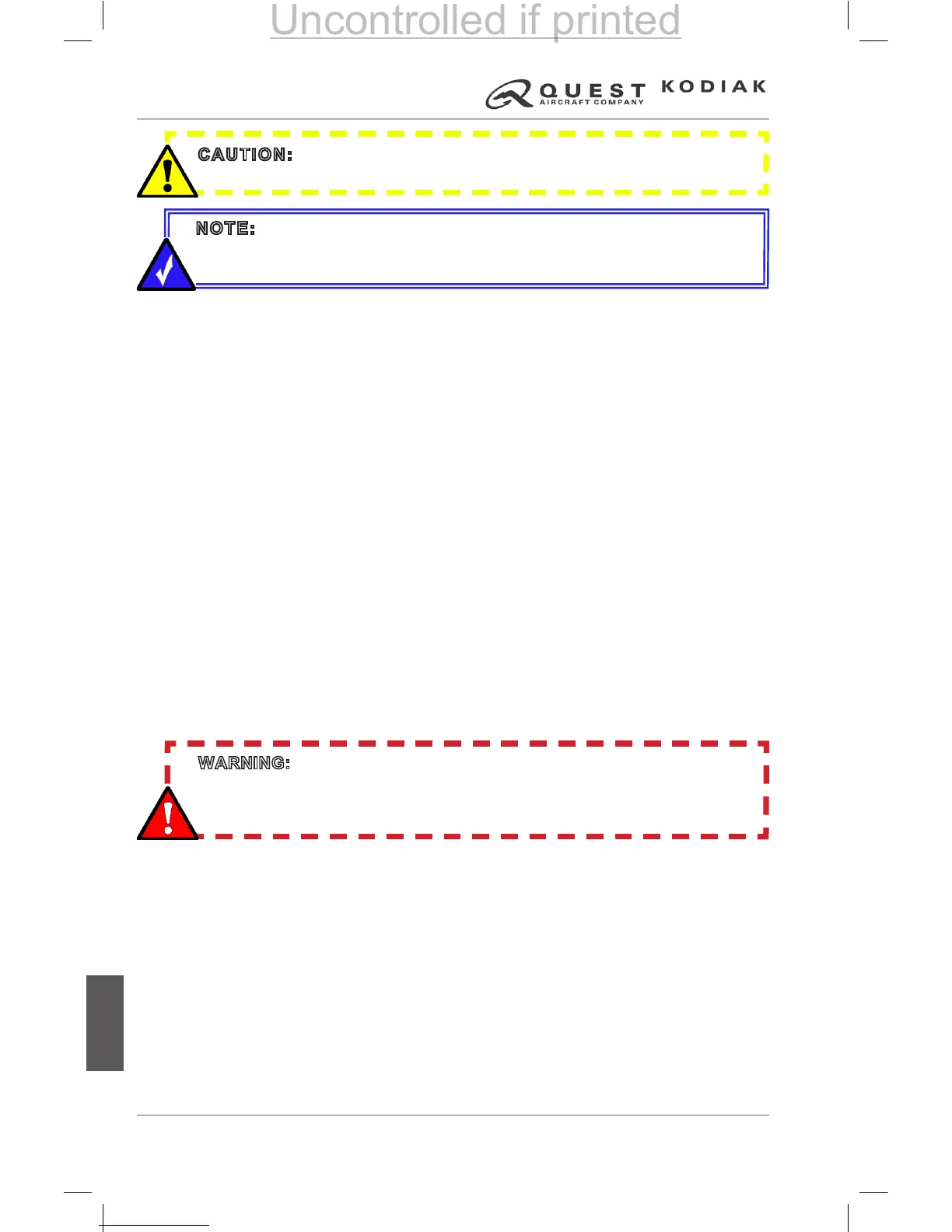CAUTION: Do not intermix different viscosities or specications of oil, as
their different chemical structures can make them incompatible.
NOTE: Do not mix types of oil unless otherwise specically approved.
Refer to “P&WC Service Bulletin Number 1001” for information concerning
changing brands, viscosities or specications of oils.
If one or more of the following conditions exist, the accessory gearbox
scavenge pump inlet screen and any drained oil should be inspected for
the presence of carbon particles, as outlined in the airplane and engine
maintenance manuals procedures and the engine manufacturer’s applicable
engine and oil service bulletins:
1. The engine oil was accidentally switched to a “third generation” lubricant, at
any time other than at engine overhaul.
2. Abnormally high oil consumption.
3. Oil leaking from the engine intake.
If carbon particles are found, refer to the above referenced maintenance
manuals and service bulletins for the corrective actions to be taken.
Oil Capacities
Total Oil Capacity ............................................Approximately 13 US Quarts
Drain and Rell Quantity
...................................Approximately 9 US Quarts
Oil Quantity Operating Range
Fill to within 1-1/2 quarts of the MAX HOT or MAX COLD markings (as
appropriate) on the dipstick. The quart markings indicate US quarts low when
the oil is hot. For example, a dipstick reading of 3 indicates the system is
within 3 quarts of MAX if the oil is hot and within 2 quarts of Max if the oil is
cold.
Oil System Servicing Intervals
If the aircraft is operated less than 50 hours per month, the oil should be
changed and inspected every 400 hours or 1 year, whichever occurs rst. For
airplanes operated in excess of 50 hours per month, an oil change interval of
1200 hours or one year, whichever occurs rst, is recommended. Regardless
of the degree of utilization, if the airplane is operated in sandy or dusty
environments, the oil change interval should be adjusted to at least every 6
months.
WARNING: Ensure the oil dipstick cap is securely latched down.
Operating the engine with the cap unlatched will result in excessive loss of
oil and eventual engine seizure. Operating the engine with less than the
recommended oil level may also lead to eventual engine seizure.
